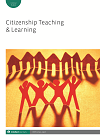
Full text loading...

This article describes a teacher education course that attempts to raise pre-service English as a second language (ESL) teacher candidates’ awareness of undocumented students in US schools. Candidates completed a critical pre-reflection on the first day of class and a critical post-reflection on the last day of class. In the intervening period teacher candidates participated in guided reflective practice to help them process scholarly books, peer-reviewed articles, documentary film and first-person narratives regarding undocumented students and their families. The pre-data indicate most teacher candidates are unaware of undocumented students and the issues they face in school and society. The post-data suggest that encouraging teacher candidates to critically reflect on information regarding undocumented students has potential to make candidates more effective teachers of undocumented students.

Article metrics loading...

Full text loading...
References


Publication Date:
https://doi.org/10.1386/ctl_00129_1 Published content will be available immediately after check-out or when it is released in case of a pre-order. Please make sure to be logged in to see all available purchase options.